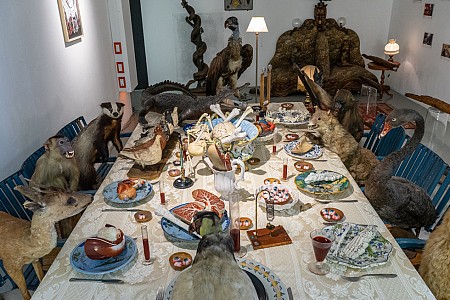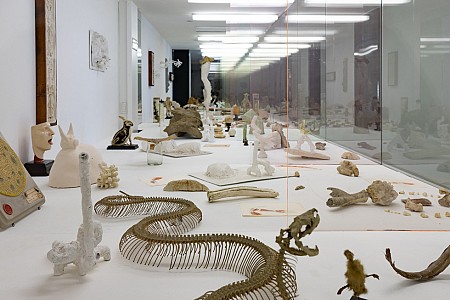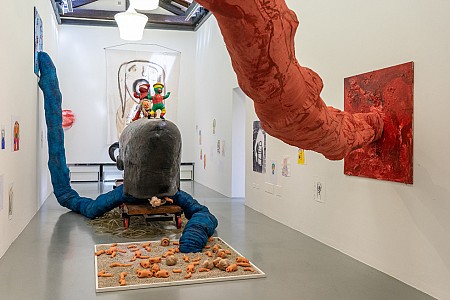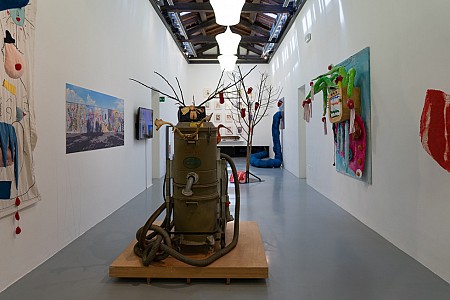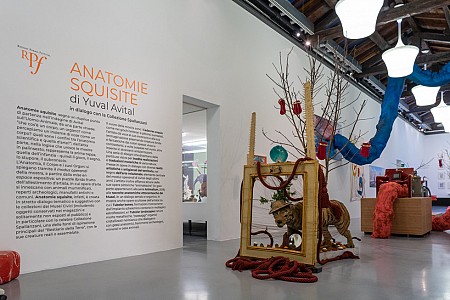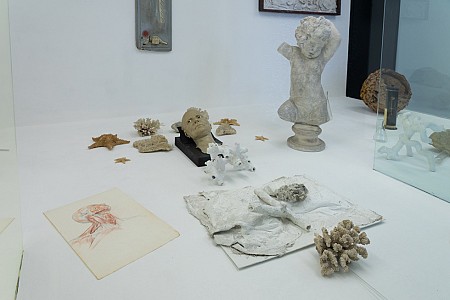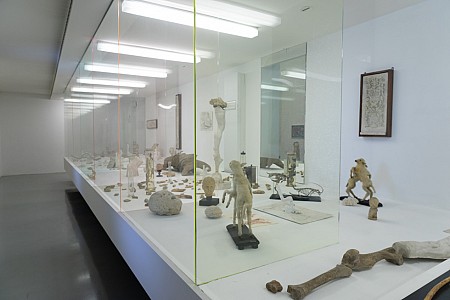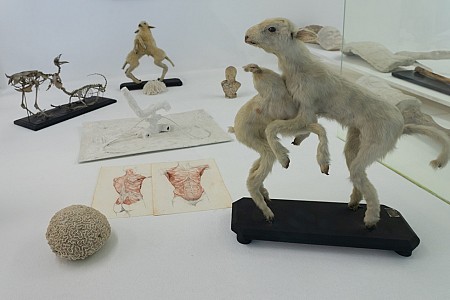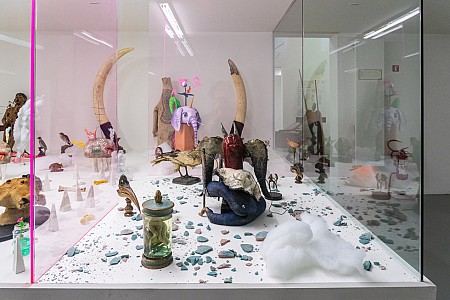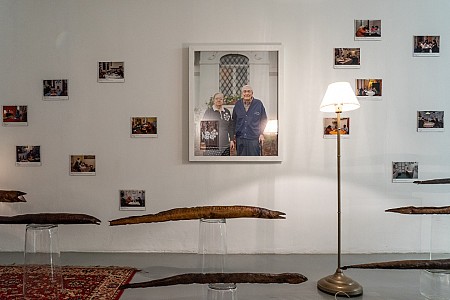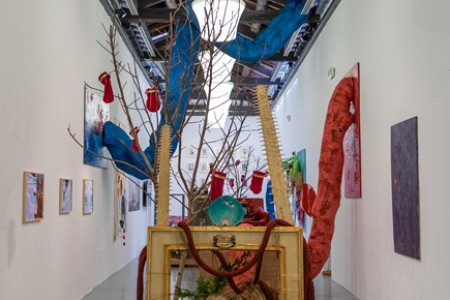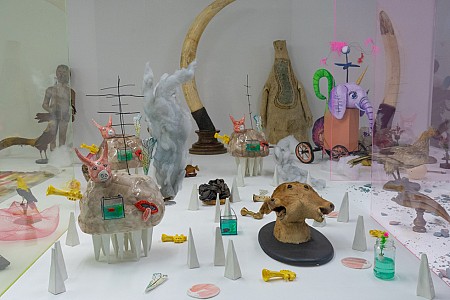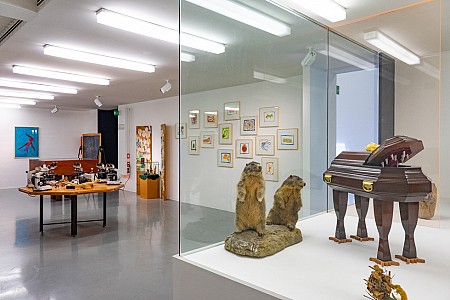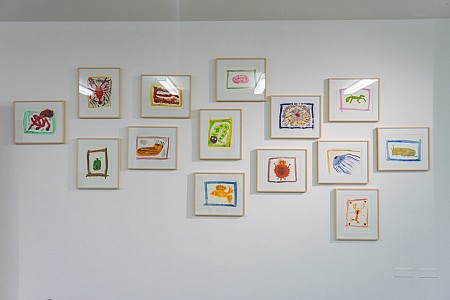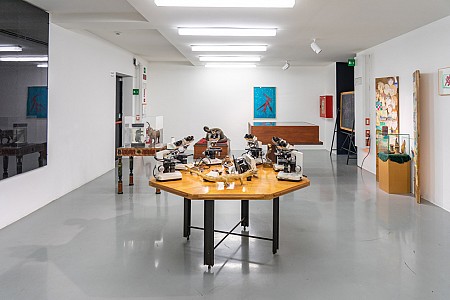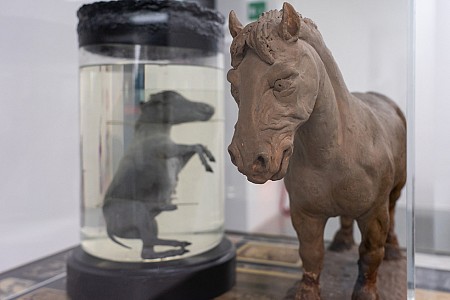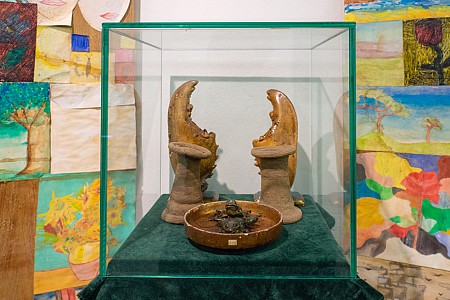In dialogue with the Spallanzani Collection of the Civic Museums of Reggio Emilia
Sound Art, Video Art, Paintings, Sculpture, Relational Artwork, Installation.
Participatory monographic exhibition curated by Alessandro Gazzotti.
Il Bestiario della Terra, Reggio Parma Festival 2022

Within the program schedule created by Avital, the first exhibition, Anatomie Squisite, marks a twofold point of departure in his investigation of the 'Man-Animal; on the one hand he asks, "what is a body, an organ? How do we perceive a set of things as a body? what are the boundaries between scientific anatomy and the anatomy of art?"; on the other hand, in the logic that unites the exhibitions scheduled, it represents the first stage, that of childhood-thus play, dream, wonder, the subconscious.
Anatomy, the Body and its Organs are explained through the exhibition's modus operandi, starting with the mise en espace: a hybrid puzzle resulting from the artist's set-up, in which works of art are combined with mummified animals, archaeological finds, ancient or common artifacts. Anatomie Squisite, in fact, is created in close thematic and evocative dialogue with the collections of the Civic Museums (including objects kept in storage and usually not exhibited to the public) and in particular with the famous Spallanzani Collection, one of the main sources of inspiration of the " Bestiario della Terra," with its real or assembled creatures.
Avital also intervenes on the spaces of the Museums, transforming them: veins and arteries emerge from the walls and floors of the galleries, created in dialogue with the professional skills of Fondazione i Teatri di Reggio Emilia. These organic and immersive protuberances surround and capture the viewer, contributing to the definition of a disturbing universe, at once visceral and sensual.
By creating unexpected and unusual `relationships' or `meta-bodies,' connected through chromatic, semantic, structural or imaginative symmetries, the artist invites the audience to construct its own narrative. The reflection on what a body is and on the concept of complex hybridizations, real and metaphorical, thus becomes a game of cross-references where something grows and proliferates, in a continuous layering of fragments of the surrounding and imaginative world.
Indeed, not surprisingly, the core of the exhibition are Avital's Cadavres Exquis: as in the Surrealist literary and pictorial games, the artist gives voice to his unconscious and imagination by shaping hybrid and fantastic creatures with often bright and contrasting colors, sometimes suspended in the void, or inserted in alienating settings. A series of drawings that become a visual score for original realizations and materic creations of various kinds, created in dialogue with different artistic and craft realities in the area, as part of a relational approach to art, central element of Avital's work in recent years.

The artist also combines some of his 'animalistic' pictorial works (mostly belonging to the Animalium series, 2018) with the Museums' nineteenth-century anatomical collections, in a close and organic dialogue. The exhibition also features some of the artist's sculptural works including the Tubular Bones, monochrome formations with a skeletal framework twisted into multiple extroflexions, and the Tubular Landscapes metaphysical still lifes, crystallized white organic 'landscapes' that dialogue with anatomical plaster casts, archaeological fragments, minerals and animal bones.
Avital is captured by the place, empathizing with it, assimilating the most diverse collections and works into his creative process and delivering a universe of creatures and creations that take the audience through an unexpected journey along the Museums' spaces to discover its exquisite anatomies.

